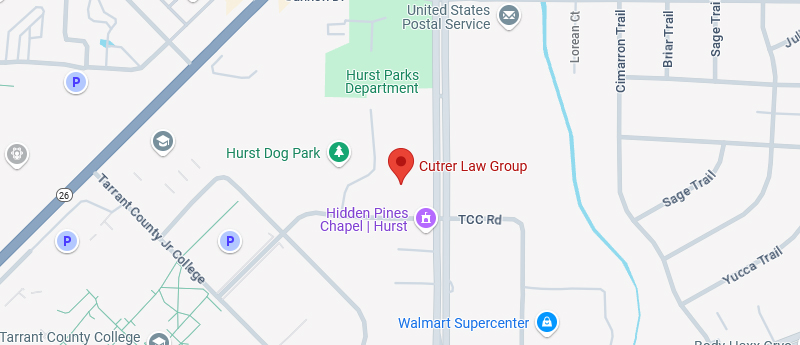When contemplating separation or divorce, a couple with children has the additional consideration of working through parenting issues and determining what arrangements are best for the child. Before beginning those discussions, it’s crucial to understand what the options for child custody in Texas are. Read on for what you need to know.
What Are the Different Types of Custody in Texas?
When most people think about child custody in Texas, their first thought often revolves around where the child will live. This is referred to as physical custody, which primarily addresses the child’s living arrangements and visitation schedules. However, Texas law also recognizes another significant aspect of custody: legal custody. Legal custody pertains to the rights and responsibilities of making important life decisions for the child, including areas such as education, religious upbringing (if any), extracurricular activities, discipline, and health or medical decisions.
Legal custody is focused on making the bigger decisions that shape the child’s future, whereas it does not involve more routine, everyday choices. For example, the decision about what the child will have for breakfast or whether they can have a friend over to play after school is typically made by the parent who has physical custody of the child at the time. Legal custody, on the other hand, is reserved for the more significant choices that influence the child’s overall upbringing and well-being.
In some cases, physical and legal custody are handled separately, while in others, they may overlap. Custody arrangements in Texas can vary widely depending on the specifics of the case. Below are the four main types of custody in Texas:
- Sole Physical Custody: One parent has primary physical custody of the child, with the other parent typically having visitation rights.
- Sole Legal Custody: One parent is granted the exclusive right to make important decisions about the child’s upbringing, such as education, healthcare, and religious training.
- Joint Physical Custody: Both parents share physical custody of the child, splitting the time spent with the child between them, although one parent may still have more time with the child.
- Joint Legal Custody: Both parents have an equal say in making significant decisions for the child, but the child may primarily reside with one parent or divide their time between both homes.
Navigating child custody in Texas can be complex, and understanding how both physical and legal custody work is crucial for parents seeking to develop a fair and comprehensive custody arrangement. A skilled child custody lawyer can provide guidance to ensure your rights and your child’s best interests are protected throughout the process.
Joint Custody
Texas courts lean toward joint custody whenever possible, considering it to be in the child’s best interests to have both parents actively involved in their lives. In Texas, there are three types of joint custody.
- Joint legal custody. In this scenario, the child lives with only one parent, but both parents have legal custody (as described above).
- Shared physical custody. Each parent has physical custody of the child for at least 35% of the time.
- Combination. Parents can create a combination joint plan that suits their needs, such as having both joint legal and shared physical custody, but rather than having the child move between two homes, the child would stay in one while the parents rotate in and out.
Sole Custody
Sole custody means one parent has both full physical custody and full legal custody as well. The child will live with that parent permanently, and that parent has the only rights to make all important decisions on the child’s behalf. This type of custody is not assigned lightly. As discussed above, the court prefers to have both parents involved in the child’s life and sees that as being in the child’s best interests.
However, if one parent is deemed unfit (there’s evidence of domestic violence or sexual abuse, or the parent is an addict) or has abandoned the family, the court will assign sole custody to the other parent.
Temporary Custody
Temporary custody refers to a custody arrangement that is put in place before a divorce is finalized and permanent custody is determined. This temporary order is intended to last only as long as it takes for the divorce proceedings to be completed and for a final hearing to take place. The primary purpose of temporary custody is to ensure that the child’s immediate needs are met during the separation period.
The court will issue a temporary custody order based on what it determines to be in the best interests of the child, which can include factors such as stability, safety, and emotional well-being. It is important to note that a temporary custody arrangement does not guarantee that the same custody plan will remain in place after the divorce is finalized.
Rather, it is a temporary solution designed to maintain the child’s stability until a more permanent arrangement is made. Parents seeking temporary custody should be aware that the court may reassess the situation at the final divorce hearing and make adjustments as needed.
Split Custody
Split custody occurs when there are multiple children in a family, and the parents decide or the court orders that each parent will take full-time custody of one or more of the children. In this arrangement, each child lives with one parent, and no single parent has custody of all the children. This type of custody is relatively uncommon and typically occurs when the children’s preferences or specific needs play a significant role in the decision-making process.
Split custody can be influenced by several factors, including the children’s ages, personalities, and their relationships with each parent. For example, older children may express a preference for living with one parent, while younger children may be placed with the other parent based on their developmental needs. The court may also consider how well the child custody arrangements supports each child’s emotional and physical well-being.
While split custody can work well in certain situations, it is important to keep in mind that the arrangement requires a high level of cooperation between parents to ensure that the children’s needs are fully met in both households. In any child custody case, the court will always prioritize the best interests of the children when determining the appropriateness of split custody.
What Does the Court Take into Consideration When Finalizing Custody?
As mentioned above, if one parent is unfit due to something such as being abusive or an addict, that will weigh heavily toward a decision for providing sole custody to the other parent. When parents request joint legal or shared physical custody, the court looks at several things.
One of the most important things the court wants to see is that in spite of the fact that they’re divorcing, the parents can remain calm and respectful with one another and negotiate custody issues in good faith. If the parents are at loggerheads over every issue, no matter how small, the judge may not agree with joint plans.
The court looks at the child’s preferences, although that’s not necessarily a major contributing factor to the custody decision. They’ll also look at the relationship the child has with their parents and a number of factors that look at the child’s best interests:
If they will live close to school, will they have access to friends and other family members, how many children are there, the financial status of each parent, and does either parent have to work excessively long hours.
What Is a Parenting Plan?
A parenting plan is a crucial document that outlines how parents will share responsibilities for their child after a divorce or custody proceeding. The court often requires parents to submit a parenting plan as part of the divorce and custody process to ensure that both physical and legal custody arrangements are clearly defined.
This plan typically addresses important issues such as visitation schedules, decision-making responsibilities, and how parents will handle any significant changes in the child’s life. Even if the court does not mandate a formal parenting plan, it is highly advisable for parents to create one. Doing so demonstrates that the parents have put their child’s well-being at the forefront, worked collaboratively to manage the challenges of custody, and are committed to maintaining stability for their child.
In some cases, parents may find it difficult to agree on the details of the plan. In these situations, mediation can be a helpful tool to facilitate productive discussions and reach a consensus. A skilled child custody lawyer can provide invaluable assistance throughout this process, offering advice and advocating for the best interests of your child while ensuring that the agreement is fair and legally sound.
How Can I Start the Process of Filing for Legal or Physical Custody of My Child?
Call the Cutrer Law Group at 817-813-8513 for a case evaluation. Ensuring the health and well-being of your child is important to you, as is remaining involved in their life after divorce. We can help you sort through your options and prepare you for negotiating custody decisions as well as drawing up parenting plans to present to the court.





 1845 Precinct Line Road
1845 Precinct Line Road info@akcfamilylaw.com
info@akcfamilylaw.com 817-854-1651
817-854-1651



